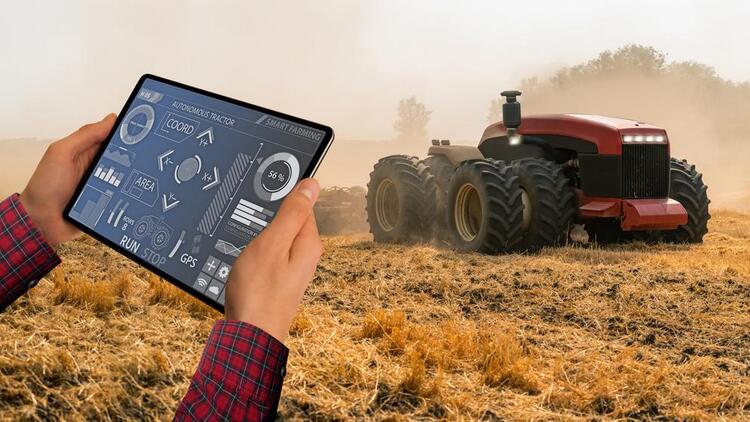
There are many good reasons to use artificial intelligence (AI) in agriculture, including increased efficiency, higher crop yields and a reduction in pesticide exposure. But are there risks and vulnerabilities inherent in a robotic takeover?
Since the term "artificial intelligence" was coined in 1956 by American computer scientist John McCarthy, computers and robotics have infiltrated nearly every aspect of our daily lives, and agriculture is no exception. In 1940, we saw the first driverless tractor, and the technology has become much more commonplace in recent years. In 2017, the first fully autonomous harvest was completed at an experimental farm called Hands Free Hectare in Edgmond, U.K.
Currently, most self-driving tractors initially require a human at the controls. But technology is advancing rapidly, and today’s model is the first step toward fully automated farming machinery. According to Allied Market Research, the global market for autonomous tractors was valued at $1,560.1 million in 2020 and is projected to reach $11,588.8 million by 2030.
Technological opportunities expand
The introduction of GPS technology to farming meant farmers no longer had to rely on visual cues to keep tractors and towed implements in line. This allowed farmers to focus on other tasks, such as ensuring accurate seed placement during planting. Large fields could be managed in smaller parcels and treated as microenvironments, leading to greater crop yields.
Precision is key not only for seed placement but also for pesticide use. In the past, whole fields would be uniformly dusted for weeds. Now, AI technology allows farmers to spot spray, killing only weeds and pests, thus reducing pesticide use overall.
And there are so many other potential applications for AI in farming:
- Want to pick the best stud for your dairy cows? AI can play matchmaker.
- Want your smartphone to tell you when to harvest your asparagus? Just tap the app.
- Want to uproot weeds without harming crops? Teach your roving robot the difference between food and foe.
The opportunities are endless. Developers have created apple-picking “hands” that measure the size and readiness of the crop, then delicately pluck the fruit and place it in its packaging. They have made farmerless, hydroponic, indoor enterprises that plant, cultivate and harvest crops in small, urban spaces. And they have successfully marketed a FarmBot that picks and cuts lettuce, celery and other crops, eliminating dangerous hand labor.
But these digitized tools are very costly to purchase, maintain, repair and replace. Many rely on photos for learning — millions of photos. A loss of the input data could be catastrophic. They also depend on seamless wireless connections to communicate data. And if the equipment fails, it can't be addressed as quickly or easily as repairs to a traditional mechanical apparatus.
When technology fails
When technology fails, business interruption costs can be hefty; there can even be massive damage to crops or loss of livestock. For example, dairy machinery manufacturer DeLaval has been the focus of a class-action lawsuit by farmers over its robotic milking machines, which plaintiffs claim failed to produce their advertised yield and didn't detect dangerous conditions like mastitis.
For now, this multimillion-dollar industry is still in the startup phase, but we aren’t even a decade away from widespread adoption. Farmers and others in the agricultural industry should be learning about the opportunities and risks of AI and planning for the effects of new technologies on their operations.
Financial protection
Are you an early adopter? Even small moves forward in the use of AI need to be discussed with your insurance professional, since they will likely impact your need for property coverage, cyber insurance, product liability protection and workers' compensation.
From microurban indoor farms to megaproducers who feed the world, farmers are in the midst of a technological torrent. Smart adoption of AI and proper insurance coverage will allow you to ride the wave of agricultural evolution.

